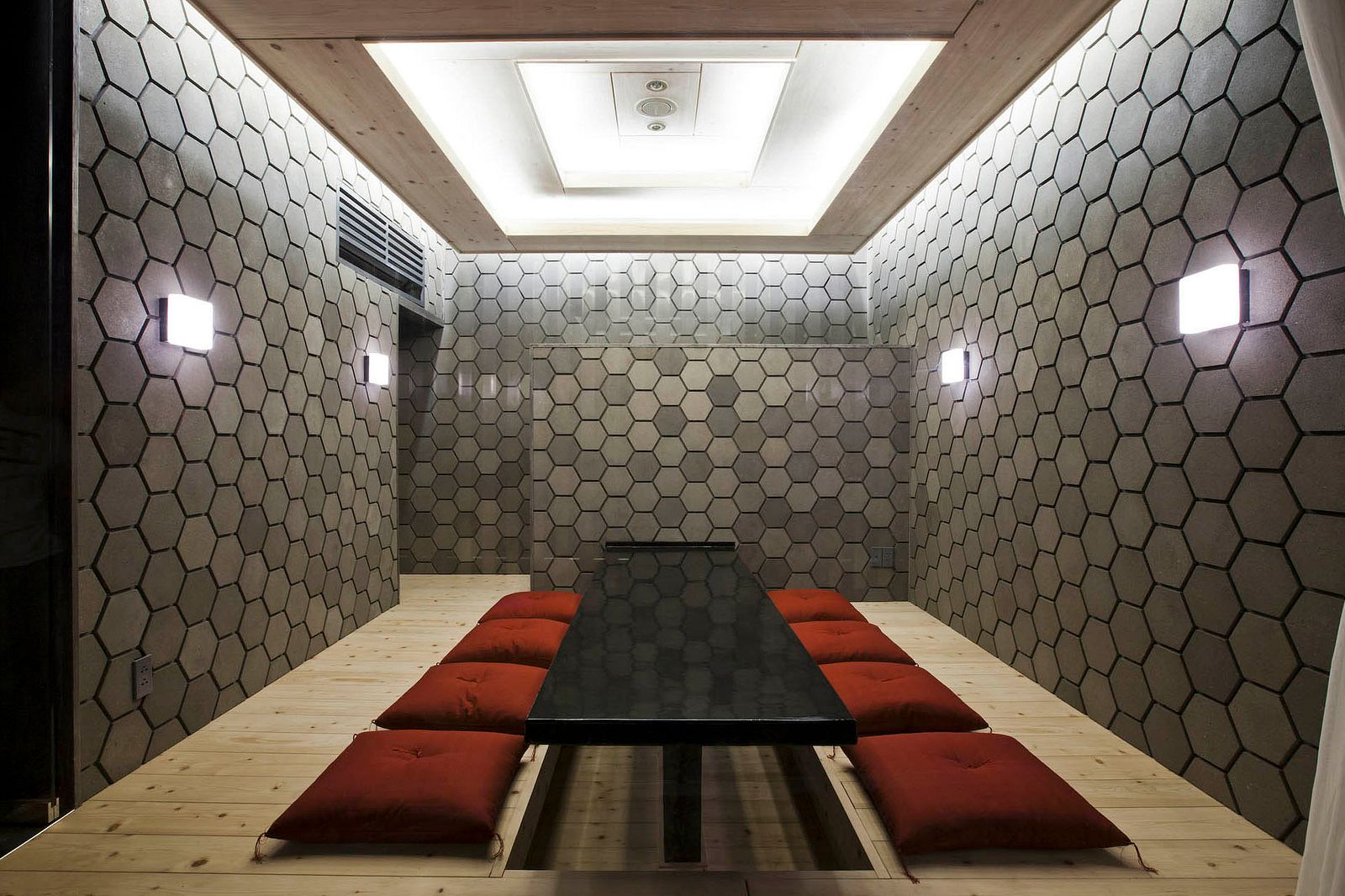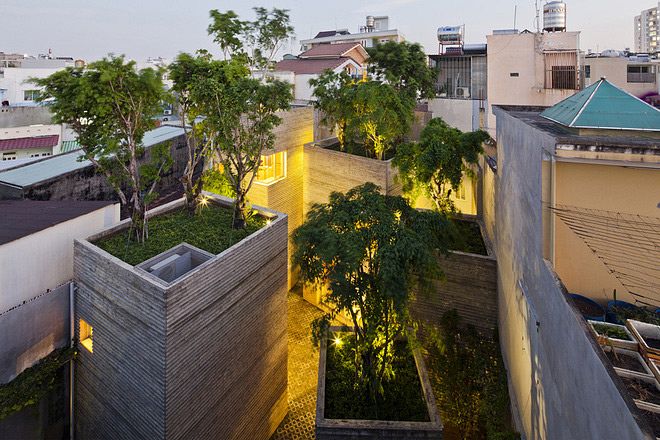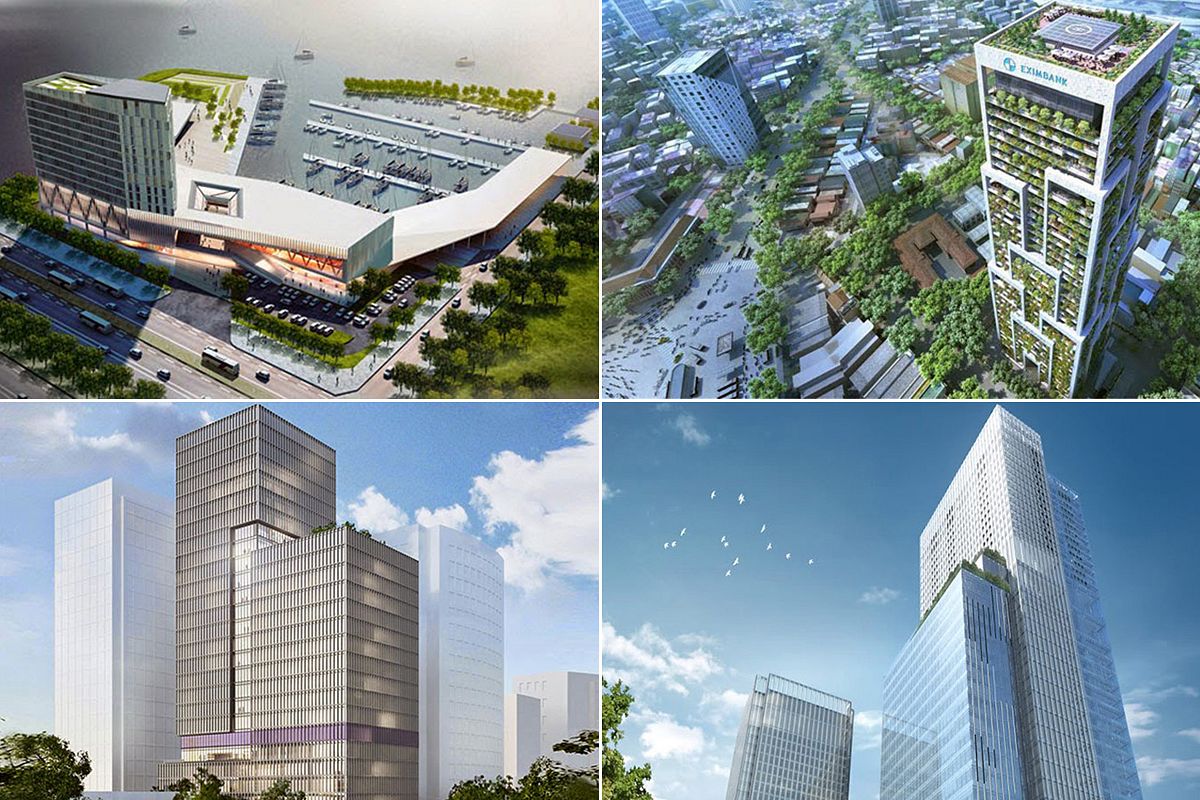Local architecture firm, 07Beach, has become the go-to choice for many of Saigon’s best Japanese restaurants. After the completion of the minimalist 4P’s Bar and Ramen Bar Suzuki, the firm’s main designer, Joe Chikamori, is back at it, transforming a typical Vietnamese building into a slick-looking sushi bar in District 1.
Related Articles:
- [Photos] Inside Saigon’s Abstract 2H House
- Every Corner Of This D7 Home Was Designed For Relaxation And Meditation
- Da Nang House Inspired By Termite Mounds And Champa Architecture
From the architect: It started from the concept to make a Sushi restaurant that provide truly real Japanese Sushi made by highly skilled Sushi Chef. Prioritizing guest’s high satisfaction rather than achieving more seats, Removed the existing upstairs to make a high ceiling one-story, composed only 8 counter seats main-building and a new-built annex.
By separating the main-building and the annex by the pond, The annex private-room is emphasized its value as visible but inaccessible. The sloping over the pond connects the counter to the annex only for service. Regarding finishings, by using local materials and techniques, aimed the suitable space for high quality Sushi and different from copying Sushi restaurant from Japan.
[Exterior]

Simple raw mortared wall for bringing out the oozing interior through the window.
[Main-Bldg. Ceiling]
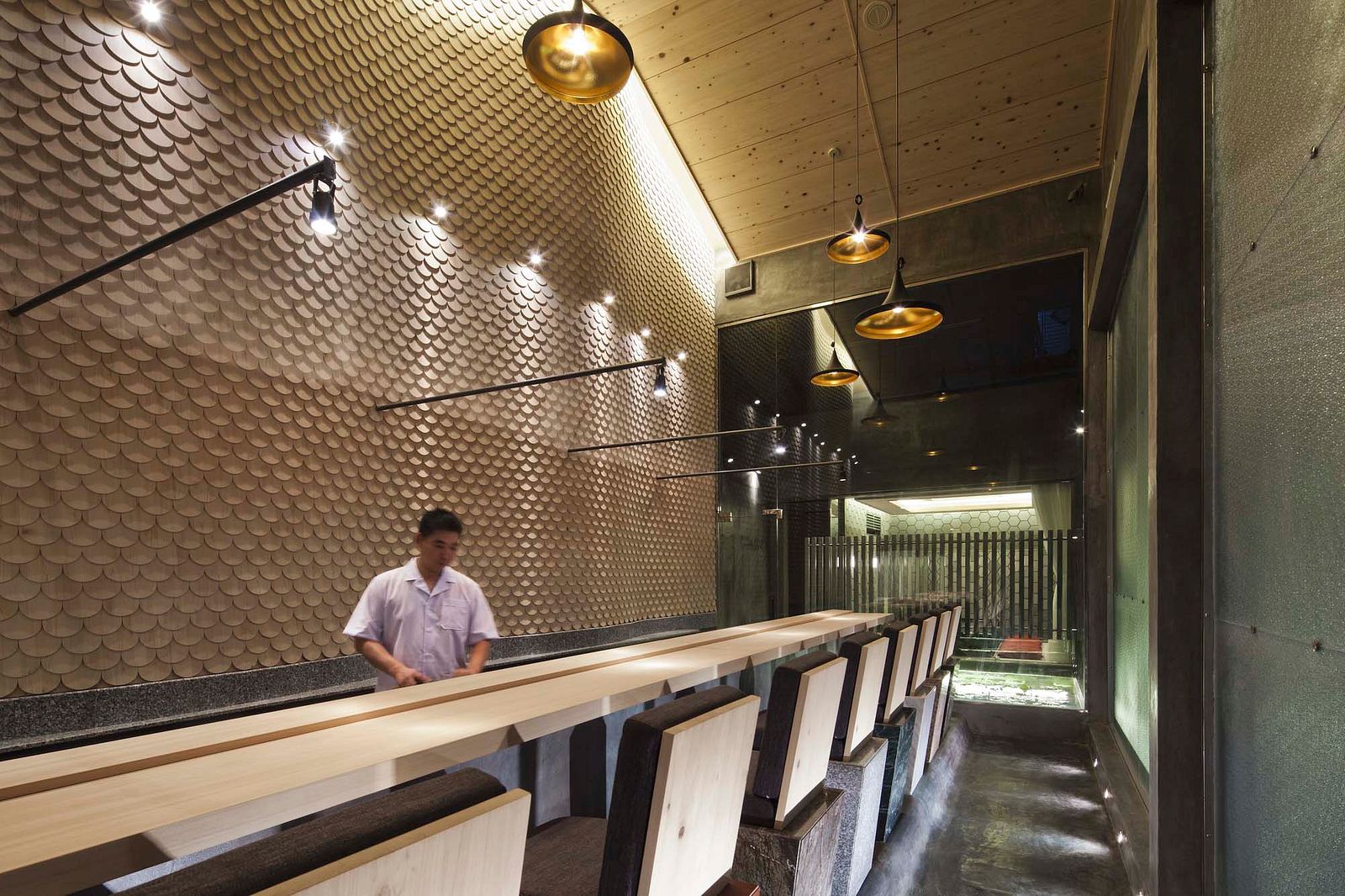
Cypress boards on the existing gabled form. The highest position is 6m, the lowest is 5m. The indirect lights against the wall and the pendant-lights hanged at high position emphasize the vertical reach of the room.
[Main-Bldg. Counter wall]
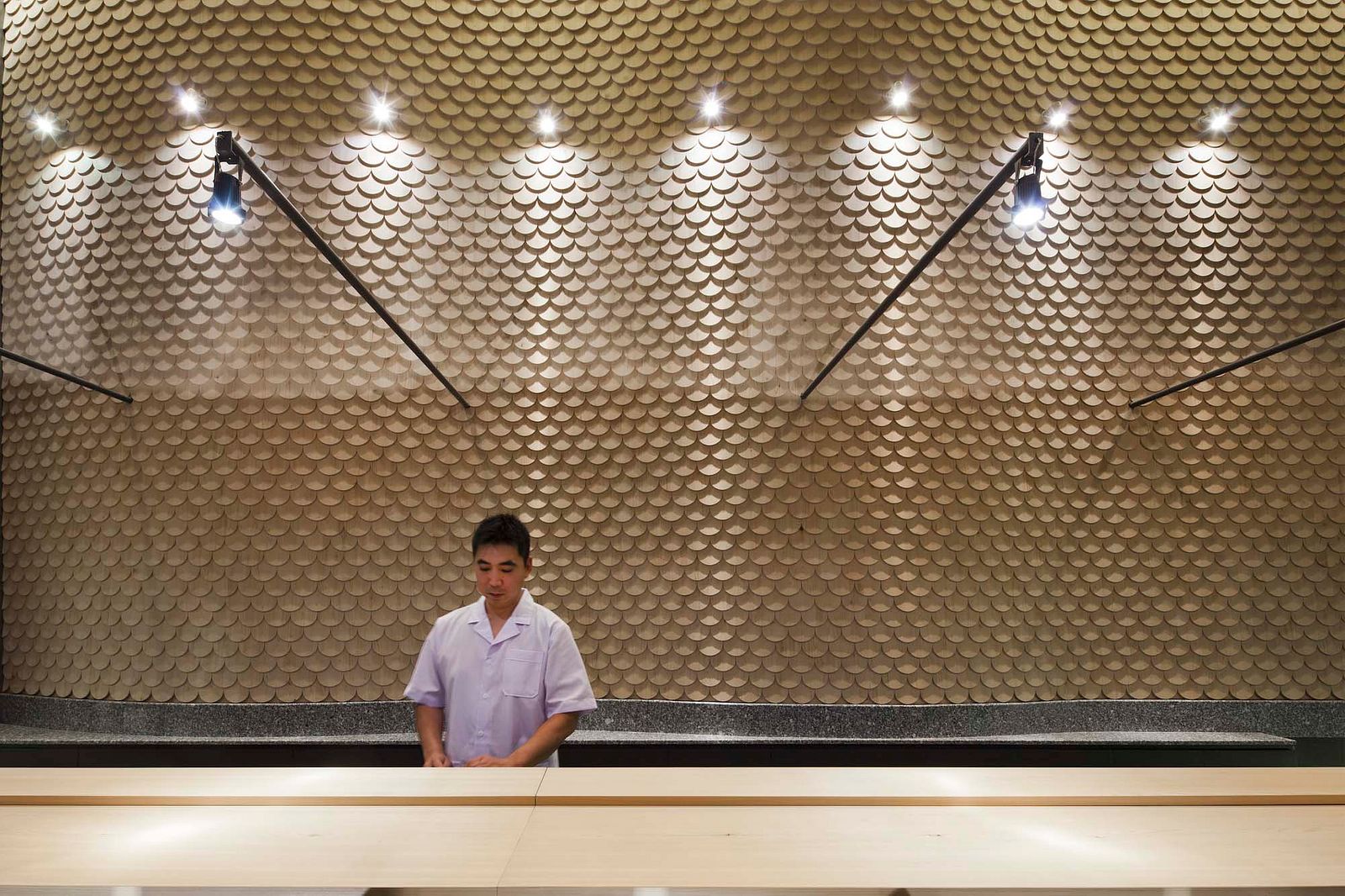
A chef is the center role. Less color to bring out his presence, Expressing fish-scales with cypress-tiles put on the whole wall. The curving wall covers existing columns.
[Main-Bldg. Floor]
Exposed mortar. The raised floor makes chairs effectively come in sight.
[Pond louver]
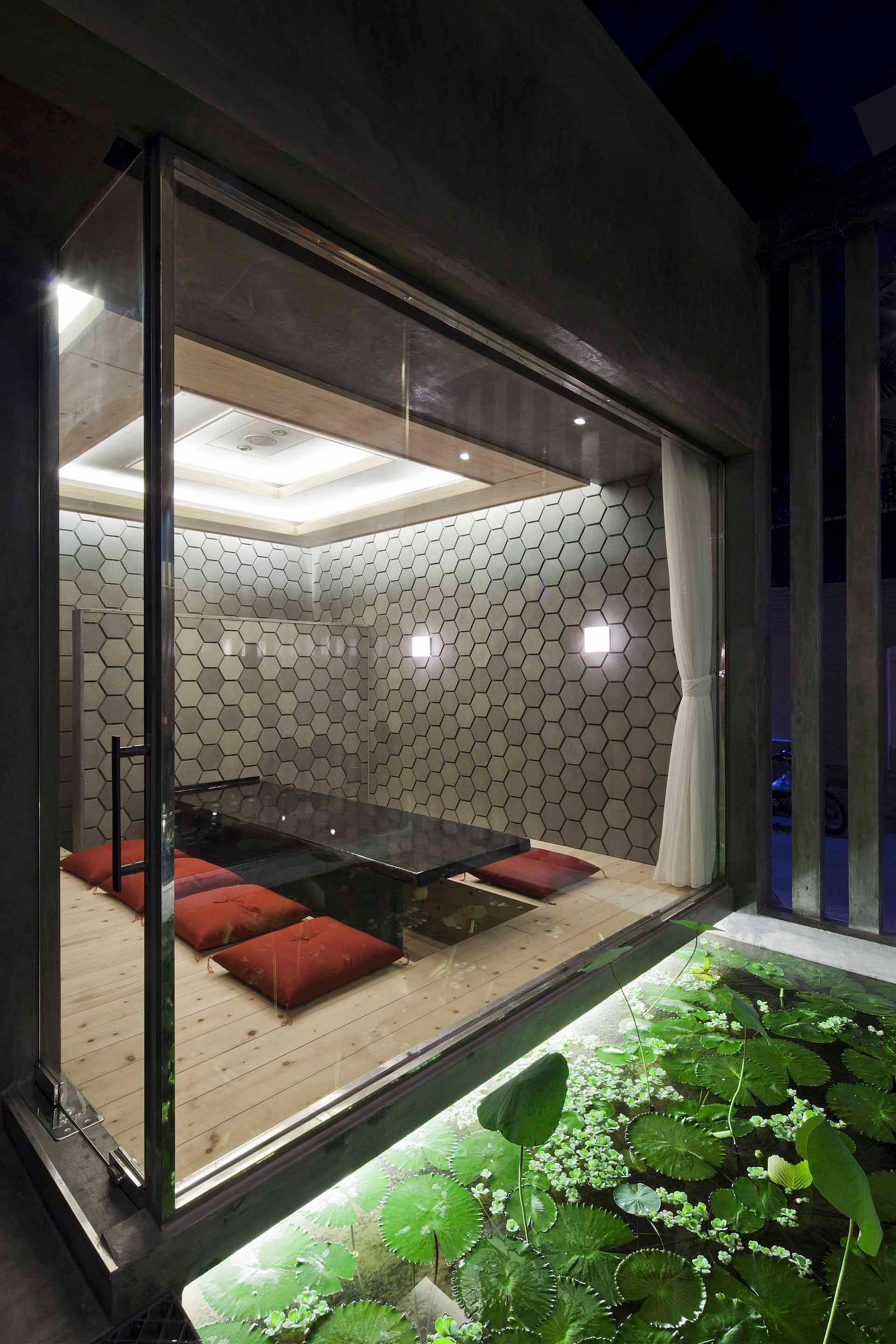
The suspended louver above the pond center, to keep the view for the pond both from the main-Bldg. and the annex, at the same time to block the sight from each other.
[Entrance]
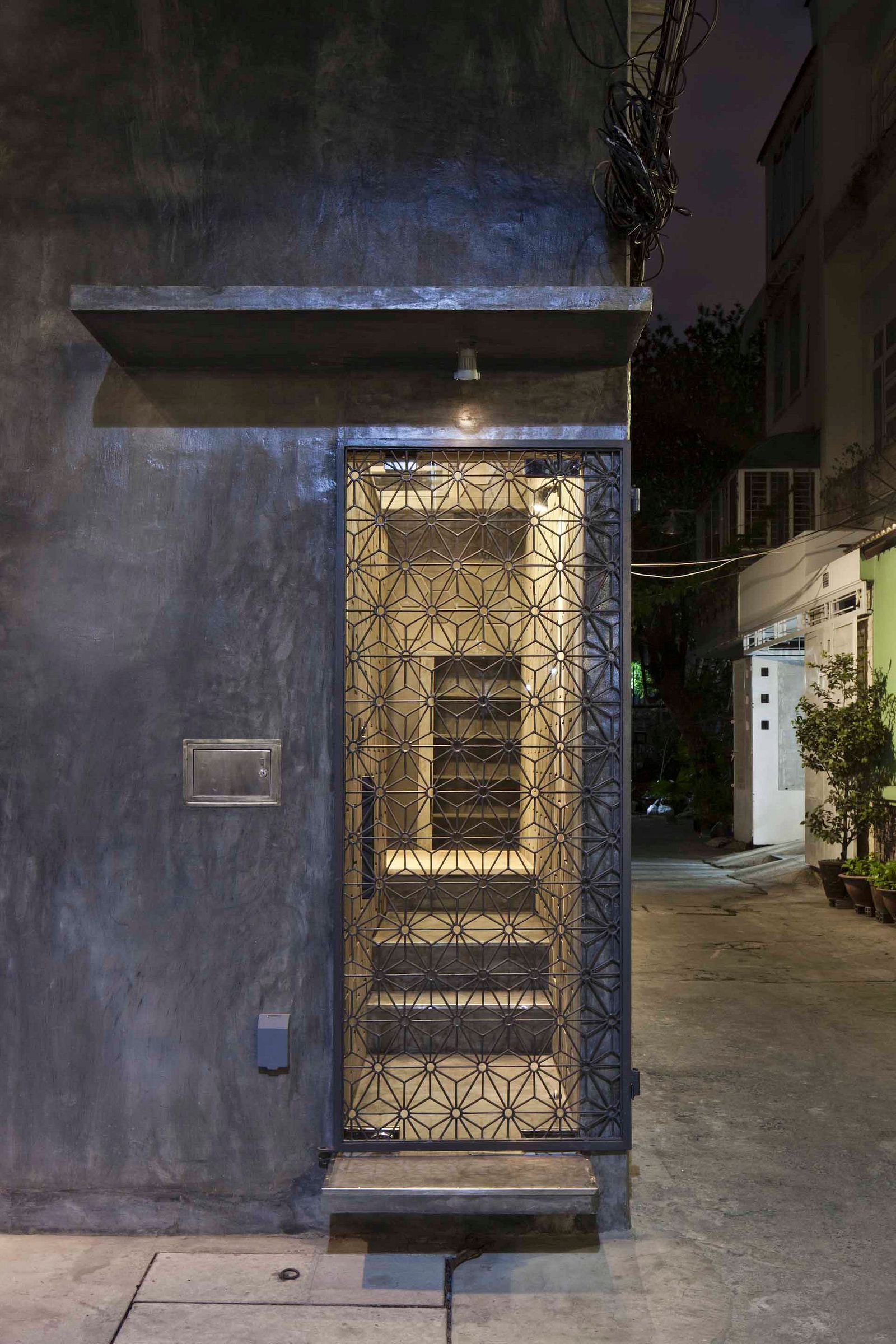
Aimed the open-interior space facing pond effectively shows up after passing the narrow entrance.
[Annex Cement tiles]
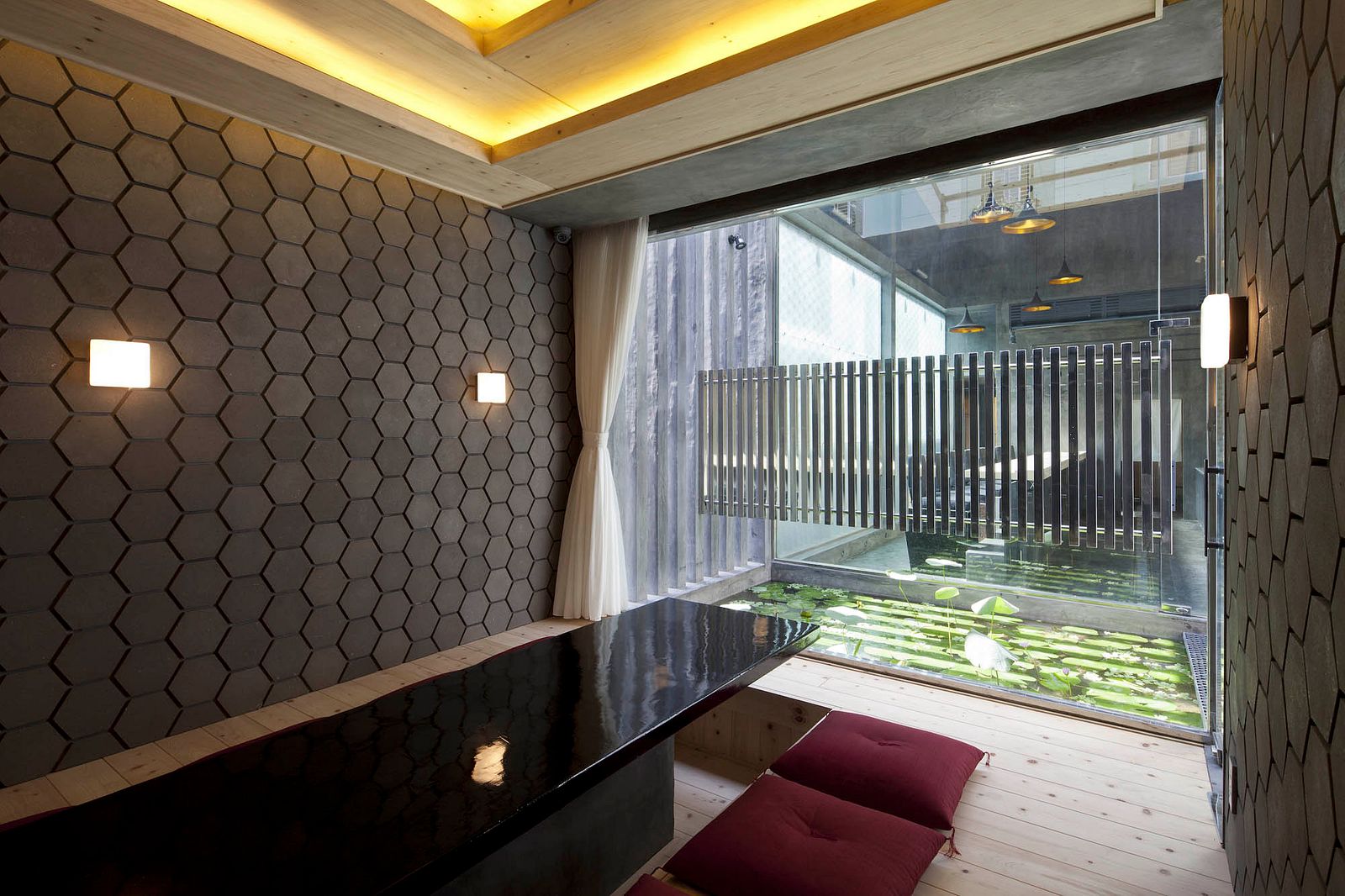
Japanese style-like Hexagonal pattern production by applying local cement tile technique.
[Annex Concrete table]
Smooth and glossy finish aiming the reflections from a wall and a ceiling become its finish.
[Annex floor and ceiling]
Cypress flooring. Three tiered ceiling boarded with Cypress

